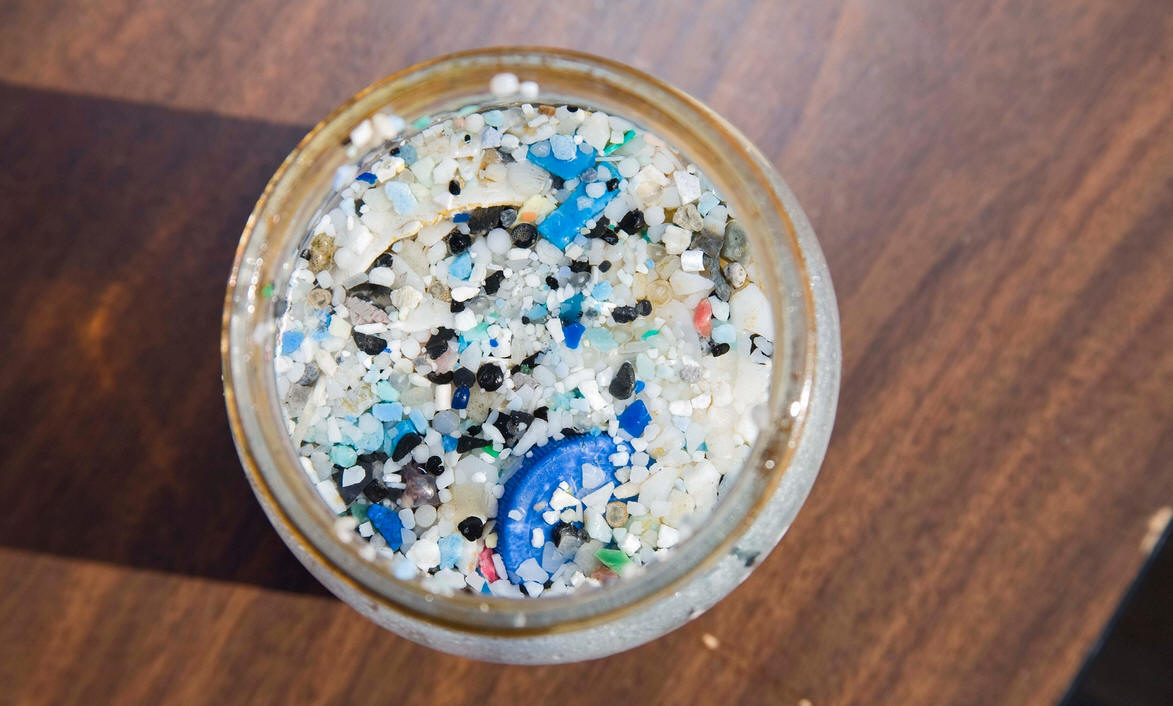Dredging plastic waste from coastal locations rather than deep in the oceans is the the most efficient way to clean it up and avoid damaging global ecosystems, according to new analysis.
Floating plastic waste ranging from bags, bottles and caps, fibres and ‘microbeads’ wash out into the oceans from rivers and sewers, while larger plastics are broken down into smaller fragments that can last for hundreds to thousands of years. Fragments of all sizes are swallowed by marine life and enter the food chain, disrupting fragile ecosystems.
Researchers from Imperial College looked at the so-called Great Pacific garbage patch - an area of open ocean in the North Pacific - which has an unusually large area of microplastics. The patch is enclosed by ocean currents that concentrate the plastics into an area estimated to be larger than twice the size of the United Kingdom.
The area has gained international attention,with a project called The Ocean Cleanup planning to deploy plastic collectorsin the area to pick up debris and remove it by ship.
But the analysis by oceanographer Dr Erik van Sebille and undergraduate physics student Peter Sherman at the Grantham Institute for Climate Change and the Environment at Imperial College London - published on Tuesday in Environmental Research Letters - suggests that targeting the patch itself is not the most efficient way to clean up the oceans.
“The Great Pacific garbage patch has a huge mass of microplastics, but the largest flow of plastics is actually off the coasts, where it enters the oceans,” said Sherman.
“It makes sense to remove plastics where they first enter the ocean around dense coastal economic and population centres where there is a lot of marine life,” added Dr van Sebille. “It also means you can remove the plastics before they have had a chance to do any harm. Plastics in the patch have travelled a long way and potentially already done a lot of harm.”
Van Sebille and Sherman used a model of ocean plastic movements to determine the best places to deploy plastic collectors to remove the largest volume of microplastics, and to prevent the most harm to wildlife and ecosystems.
They found that placing plastic collectors like those proposed by The Ocean Cleanup project around coasts was more beneficial than placing them all inside the patch.
Planning for a ten-year project between 2015 and 2025, the pair calculated that placing collectors near coasts - particularly around China and the Indonesian Islands - would remove 31% of microplastics. With all the collectors in the patch, only 17% would be removed.
The pair’s model also looked at areas where microplastics overlapped with phytoplankton - microscopic floating plants that form the basic food of many ocean ecosystems. Many microplastics enter the food web in these areas as microscopic animals accidentally eat them.
Running the same model for areas rich in phytoplankton came up with a similar result; the overlap was reduced by 46% by placing collectors near certain coasts, whereas the overlap was only reduced by 14% by placing the collectors in the patch.
“There is a lot of plastic in the patch, but it’s a relative dead zone for life compared with the richness around the coasts,” added Sherman. A recent analysis by Dr van Sebille and colleagues in Australia showed that more than 90% of seabirds have swallowed plastics, and these birds are also concentrated around coasts where their food is plentiful.
The pair will refine their analysis, but say the results are clear and hope that plastic collecting projects in the future will focus on the coastlines.
“We need to clean up ocean plastics, and ultimately this should be achieved by stopping the source of pollution,” Sherman went on. “However, this will not happen overnight, so a temporary solution is needed, and clean-up projects could be it, if they are done well.”
According to a recent report from the Environmental Investigation Agency, global plastics production has soared from 5m tonnes a year in the 1960s to a staggering 299m tonnes in 2013, with uses ranging from packaging and toys to clothes, computers and beauty products.
It said an estimated 4.8-12.7m tonnes of plastics enter the world’s oceans every year due to littering and inadequate waste management. Without action to address the problem, this figure is expected to increase to as much as 28 million tonnes a year by 2025.

